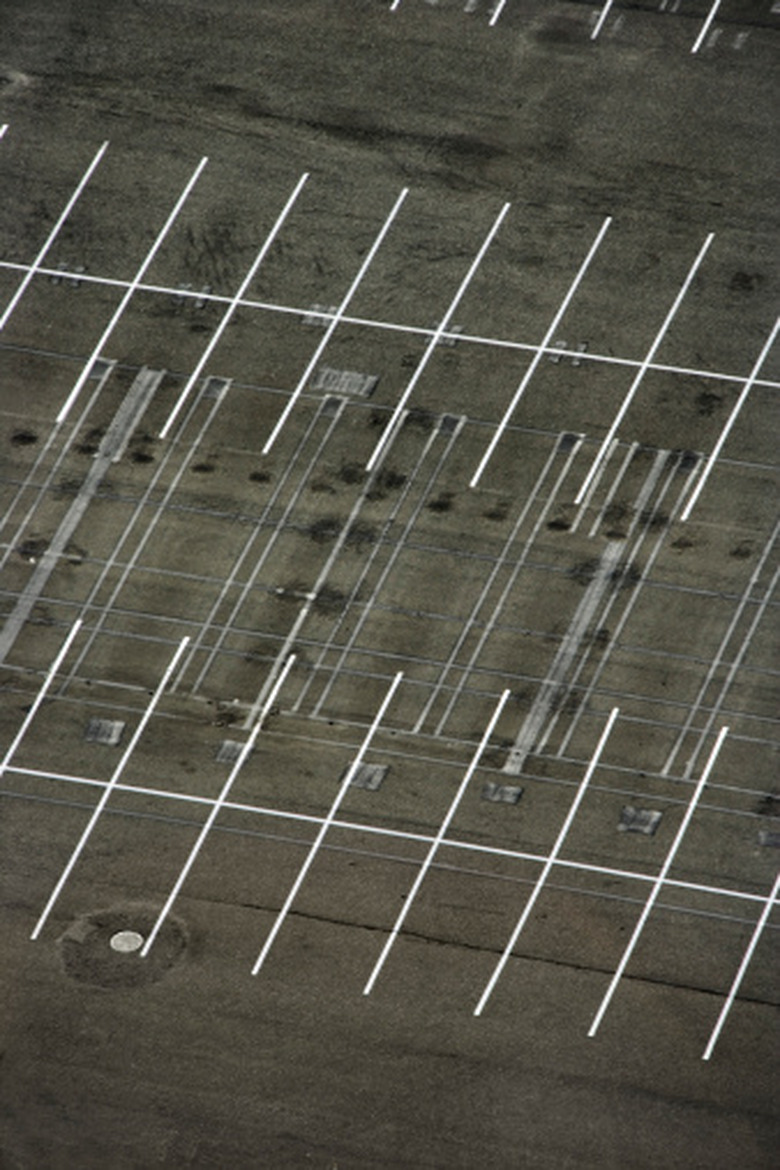A Description Of Parallel & Perpendicular Lines
Euclid discussed parallel and perpendicular lines over 2,000 years ago, but the complete description had to wait until Rene Descartes put a framework on Euclidean space with the invention of Cartesian coordinates in the 17th century. Parallel lines never meet–as Euclid pointed out–but perpendicular lines not only meet, they meet at a specific angle.
Slope
Slope
Slope describes a line's relationship to the X axis. If a line is parallel to the X axis, the slope of the line is 0. If the line is tipped so that it runs uphill, when approached from the origin, it will have a positive slope. If it is tilted down, the slope will be negative. If you pick two points on a line that are labeled (X1, Y1) and (X2, Y2), the slope of the line is (Y1 – Y2) / (X1 – X2). The relationship between the slops of two lines determines if they are parallel, perpendicular or something else.
Slope Intercept Format
Slope Intercept Format
The equation for a straight line can appear in many formats, but the standard format is aX + bY = c where a, b and c are numbers. If you know the slope and a point on the line, you can write the equation Y -Y1 = m(X – X1), where the slope is m and the point is (X1, Y1). If you take the point where the line crosses the Y axis (0, b) the formula becomes Y = mX + b. This form is called the slope-intercept form because m is the slope and b is the place where the line crosses the Y axis.
Parallel Lines
Parallel Lines
Parallel lines have the same slope. The lines Y = 3X + 5 and Y = 3X + 7 are parallel, and they are two units apart throughout their entire length. If the slope of two lines were different, the lines would approach each other in one of the directions and they would eventually cross. Notice that the m in Y = mX + b is what determines the slope. The b only determines how far apart the parallel lines are.
Perpendicular Lines
Perpendicular Lines
Perpendicular lines cross at a 90 degree angle. You can look at the equations of two lines in slope intercept form and tell if the lines are perpendicular. If the slopes of two lines are m1 and m2 and m1 = -1/m2, the lines are perpendicular. For example, if L1 is the line Y = -3X – 4 and L2 is the line Y = 1/3 X + 41, L1 is perpendicular to L2 because m1 = -3 and m2 = 1/3 and m1 = -1/m2.
Cite This Article
MLA
Mano, Carlos. "A Description Of Parallel & Perpendicular Lines" sciencing.com, https://www.sciencing.com/description-parallel-perpendicular-lines-8482042/. 24 April 2017.
APA
Mano, Carlos. (2017, April 24). A Description Of Parallel & Perpendicular Lines. sciencing.com. Retrieved from https://www.sciencing.com/description-parallel-perpendicular-lines-8482042/
Chicago
Mano, Carlos. A Description Of Parallel & Perpendicular Lines last modified March 24, 2022. https://www.sciencing.com/description-parallel-perpendicular-lines-8482042/
